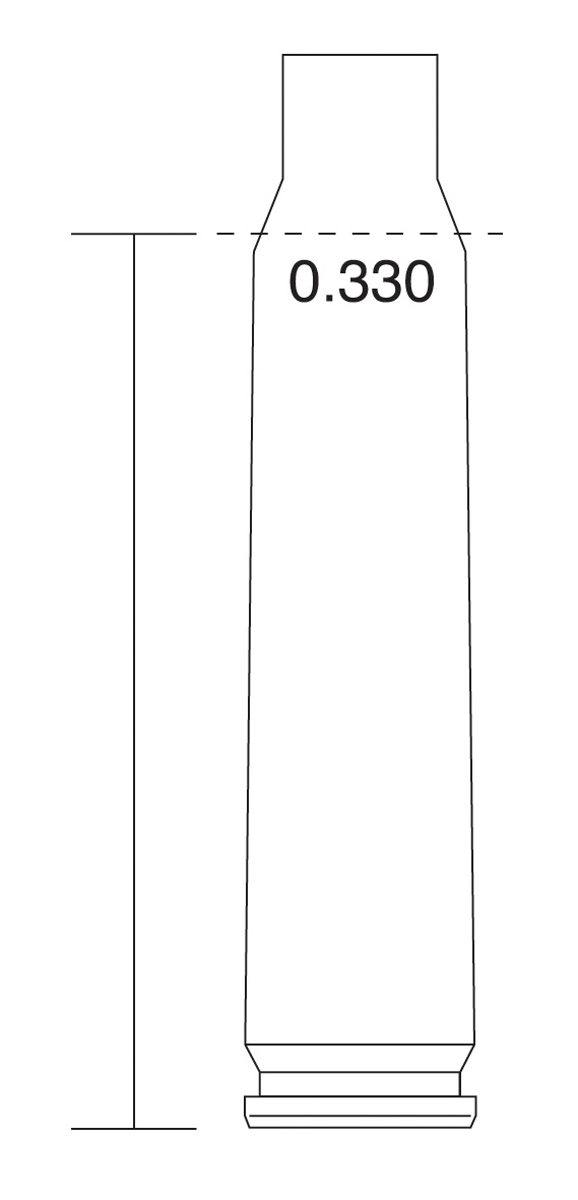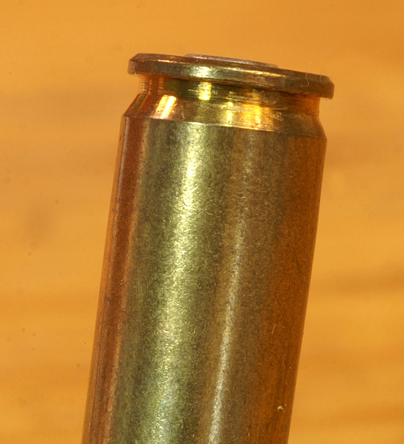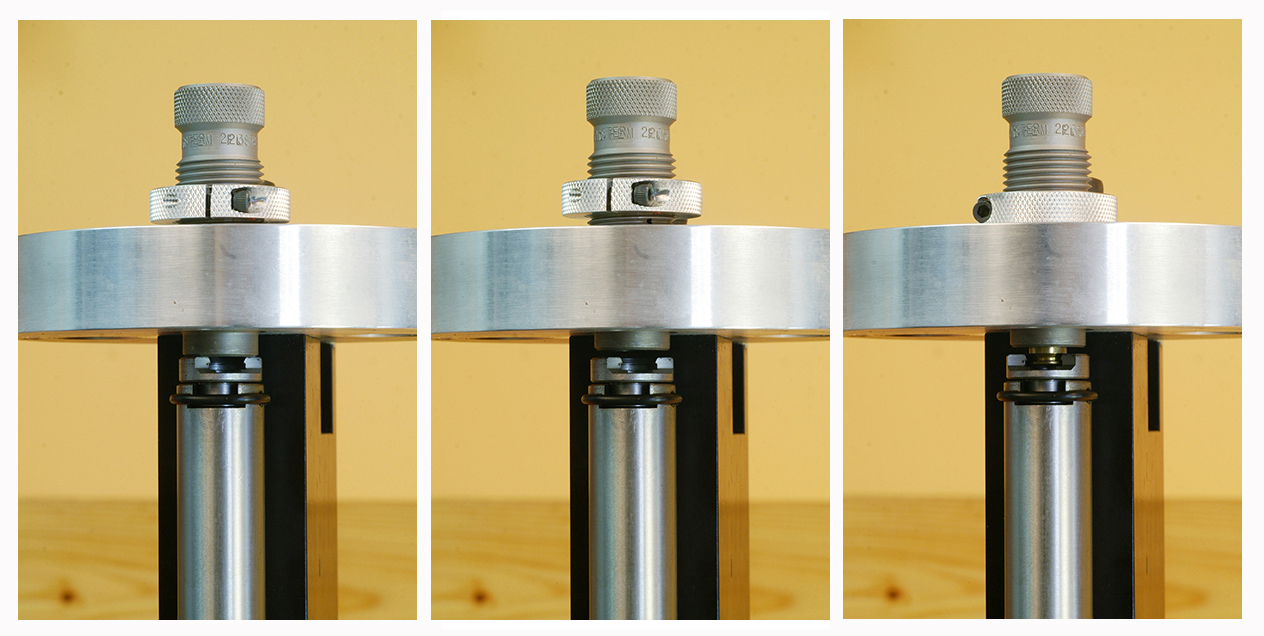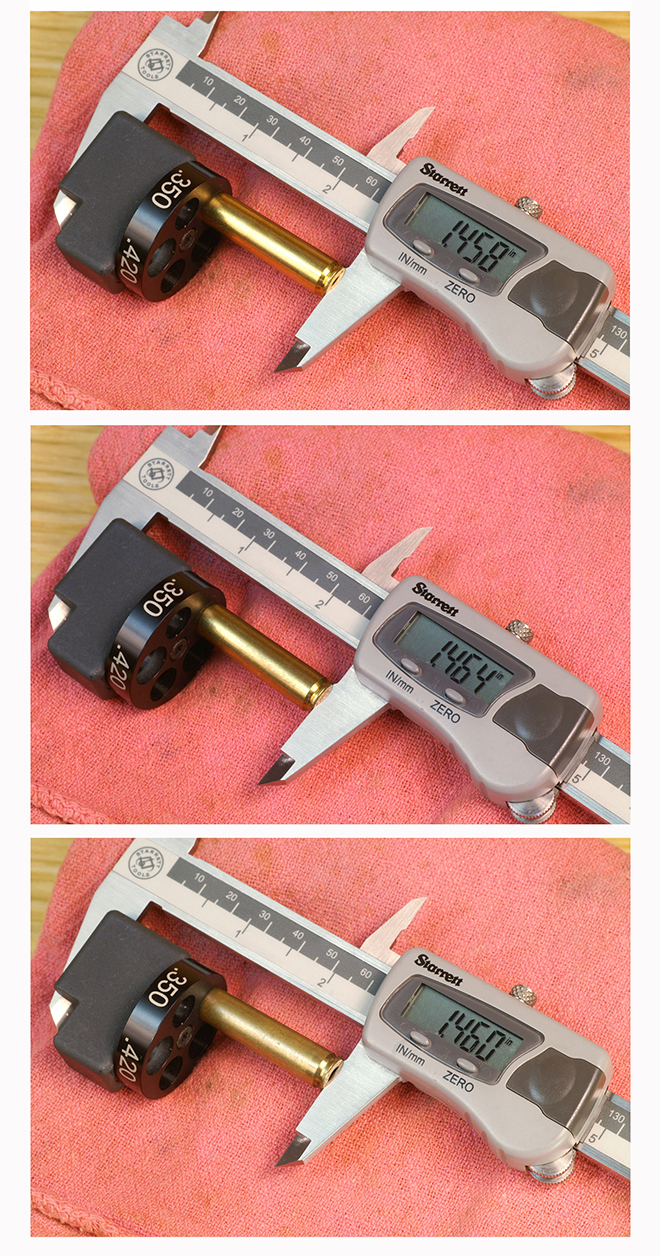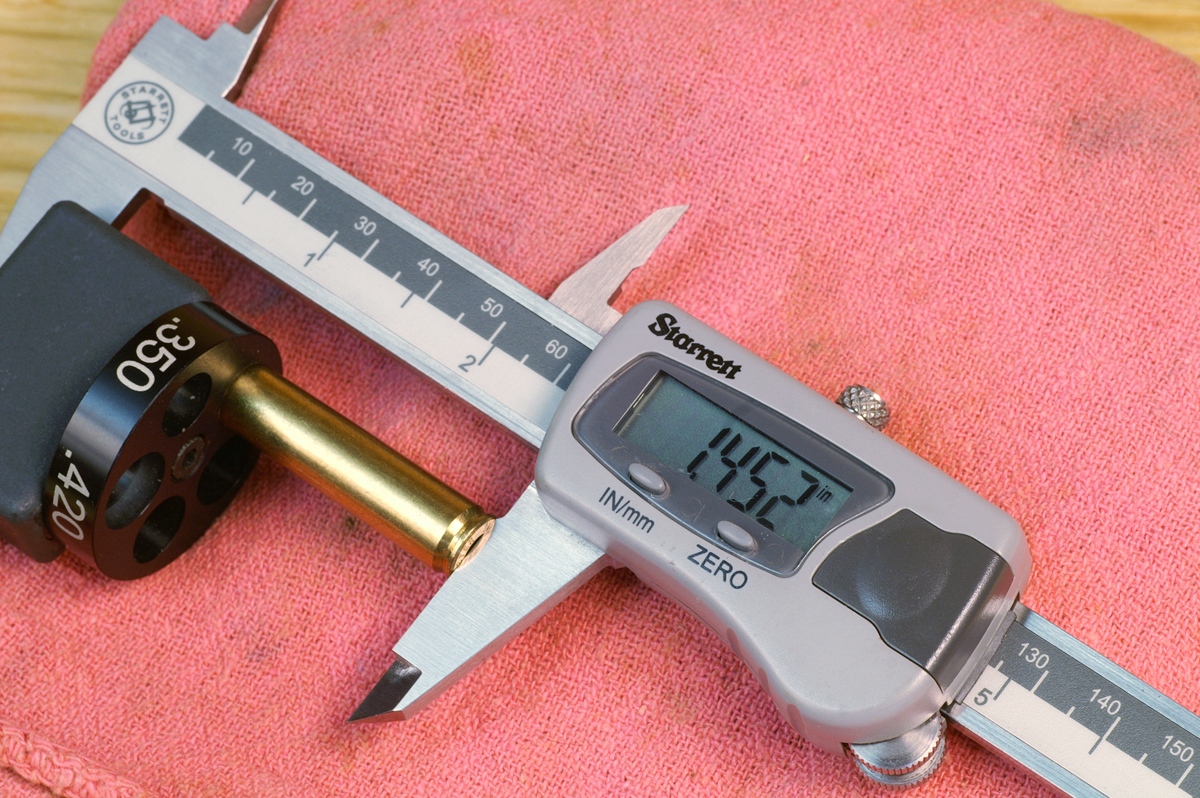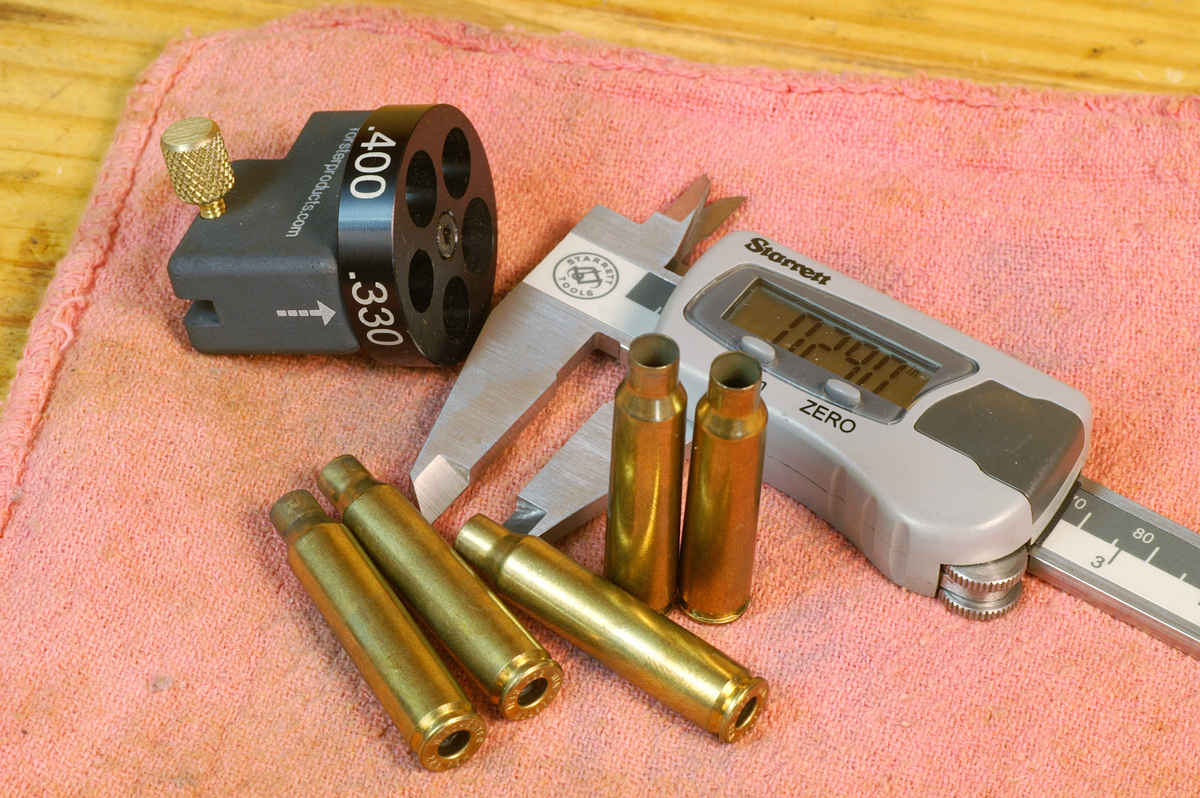The following is a specially-adapted excerpt from the forthcoming book, “Top-Grade Ammo,” by author Glen Zediker, owner of Zediker Publishing. Click here to order.
by Glen Zediker
A rifle chamber has a headspace; a cartridge case has a headspace. The first is set by the chamber reamer and its operator; the next is up to us on the loading bench.
This is the loose working definition for headspace necessary to understand for this next: It’s the space from the bolt face to the “datum line” on the case shoulder. SAAMI sets standards for this dimension for each cartridge, and a gunsmith or manufacturer can have a little leeway in establishing the exact dimension in a rifle chamber.
In practical terms: Chamber headspace dimensions are fixed; cartridge headspace dimensions are variable. In a semi-auto, there should be some room, space, ahead of the case shoulder when the round is fully chambered, not be a perfect, flush fit. This is necessary for safe function in a semi-auto. In a bolt-action, the difference between chamber headspace and cartridge headspace can be miniscule to non-existent.
A little extra space helps ensure reliable functioning in a semi-auto, and also, mostly, precludes the chance that the case might bottom out on the shoulder area in the chamber before the bolt is fully locked down.
Back to more definitions. A datum line is actually a diameter; the line itself (the point set by the headspace dimension) is the point along a case shoulder that coincides with this diameter. There are only 5 datums that apply to virtually all bottleneck rifle cartridges. (Modern bottleneck rifle cartridges headspace off the case shoulder. Belted magnums and rimmed cartridges are different stories, for a different story.)
To correctly resize cases, we need a gage. Of course we do! I prefer the one shown in this article. It reads from case base to datum line, just as it’s done in chambering a barrel.
I talked before about how semi-autos can often exhibit case shoulder growth in measurable excess of the chamber. Meaning: the case shoulder can be free to expand beyond the confines of rifle chamber dimensions, and that is from the premature bolt unlocking that accompanies most every gas-operated rifle. Even when the system is working optimally, the case shoulder can advance slightly as the bolt just begins to unlock and move away because the case is still containing pressure. The severity of the discrepancy has mostly to do with how much the gas system is overloaded.
To refurbish a spent case, the case body outside needs to be shaped up to near-to-new dimensions, and also the case shoulder needs to be “set back” an adequate amount to ensure positive chambering with just a tad of “rattle” between the chamber shoulder and the case shoulder. In a bolt-gun, the case emerges from the chamber holding essentially a dimensional mirror of the chamber itself (minus, always, the 0.001 “spring back” inherent in the brass material).
For best results, and case life, we need to figure out how much to set the shoulder back. Too much really won’t affect load performance, but, in my belief, deliberately creating what amounts to excessive headspace is not wise. It’s just that much more expansion, that much more “working” the brass has to endure. However! That’s not nearly as bad as leaving the shoulder too high! That’s dangerous.
For day-in, day-out use, I suggest setting back the case shoulder 0.004 inches from fired case dimensions for semi-auto ammunition. If you keep the chamber clean, then go with 0.003. I think that 0.002 is not enough in a semi-auto, but that is plenty enough in a bolt-gun, and 0.001 is the minimum. Commence argument, but I’ll stick by those numbers.
The numbers we need to get from our gage are these: new, unfired case shoulder height (where we started); fired, unsized case shoulder height (where we went to); sized case shoulder height (where we need to get back to).


